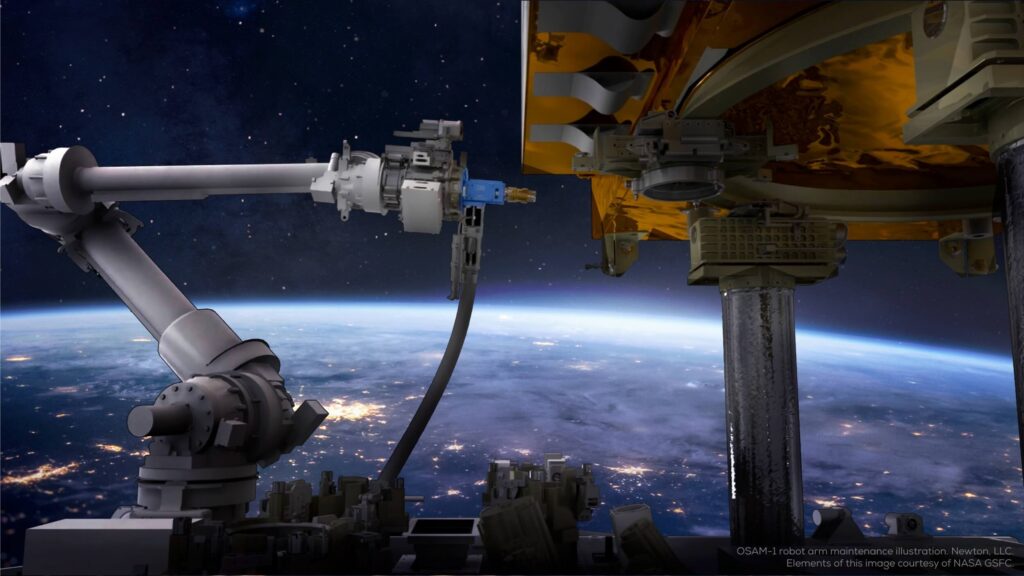After nearly a decade developing technologies to assemble and maintain satellites in space, NASA reluctantly canceled its highly anticipated Orbital Servicing, Assembly and Manufacturing 1 (OSAM-1) mission without yet attempting a demonstration flight. Bedeviled by technical delays, escalating costs and inability to secure an external partner, OSAM-1 failed reaching launch readiness – dealing a blow to visions of responsive orbital infrastructures.
This analysis examines the ambitious OSAM-1 mission, contributing factors crippling its viability after years of work, and the uncertain future now confronting orbital satellite servicing initiatives without a maiden pathfinding success to spark confidence and momentum.
Mission Objectives: Pushing Boundaries of Spacecraft Autonomy
Conceived in 2013 under NASA’s Space Technology Mission Directorate banner, the OSAM-1 mission consisted of two primary goals:
Satellite Refueling Methods
One component focused on pioneering techniques to transfer propellant from OSAM-1 into retired satellites not designed originally for refueling but whose lifespan could stretch significantly via topping up tanks.
This aimed to prove extending existing assets on-orbit rather than launching replacements – saving substantial cost and resources long term.
Satellite Manufacturing & Assembly
The second ambitious element targeted validating the feasibility of assembling complex satellites by physically joining modular components together while in space.
This opened possibilities such as on-demand augmentation of sensors or antennas to meet evolving mission requirements after deployment.

Root Causes Behind OSAM-1 Mission Cancellation
Despite a promising vision and lengthy development, the OSAM-1 endeavor stumbled on several key fronts collectively sealing its fate:
Technical & Integration Difficulties
Engineers grappled with interoperability issues between the autonomous rendezvous sensors, robotic arm manipulators, satellite docking adapters and custom refueling kits.
These persistent systems integration headaches introduced multi-year delays and cost overruns.
Ballooning Price Tag
Initially budgeted around $250 million, some estimates pegged OSAM-1’s final projected cost exceeding $600 million after accommodating extended timelines and associated facilities/management overhead.
This escalation triggered internal program reviews questioning return on investment feasibility.
Absence of External Partner
Unlike high profile missions like the Mars Perseverance Rover or James Webb Space Telescope, NASA failed attracting a complementary external partner to share OSAM-1’s materializing financial risk.
This left NASA fully absorbing ever growing expenditures in isolated development.
Implications for Satellite Servicing Ambitions
Without the OSAM-1 attempt cementing confidence in underlying concepts and platforms, ripples across technological, economic and policy spheres emerge:
Prolonged Technology Immaturity
Success could have propelled greater investment and research into next generation satellite servicing equipment and methods, especially from risk-averse private firms.
Its absence leaves core enabling capabilities underdeveloped for years hampering follow-on initiatives.
Weakened Commercial Business Case
Struggling upstart space logistics companies face tougher convincing customers on responsive satellite upkeep, repair or upgrade models without inspiring government validation lifting perceptions.
This slows the incubation of wider orbital servicing ecosystems.
Revisiting Policy Support
Political stakeholders could also grow warier sustaining multi-year budget allocations for satellite servicing technology development without demonstratable progress.
This risks further stretching out capability timelines.
Charting An Uncertain Future
While NASA’s swift OSAM-1 cancellation represents a high profile setback, it thankfully does not completely derail ambitions of sustainably maximizing space assets via remote upkeep and reconfiguration even if it delays them.
Industry observers believe collaboratively balancing servicing technology innovation across the public and private sector without overreaching on initial complexity provides the most resilient path forward.
With stakes no less than ushering responsive and resilient space infrastructure matching 21st century demands, getting the formula right remains vital – even if iterative.










Add Comment